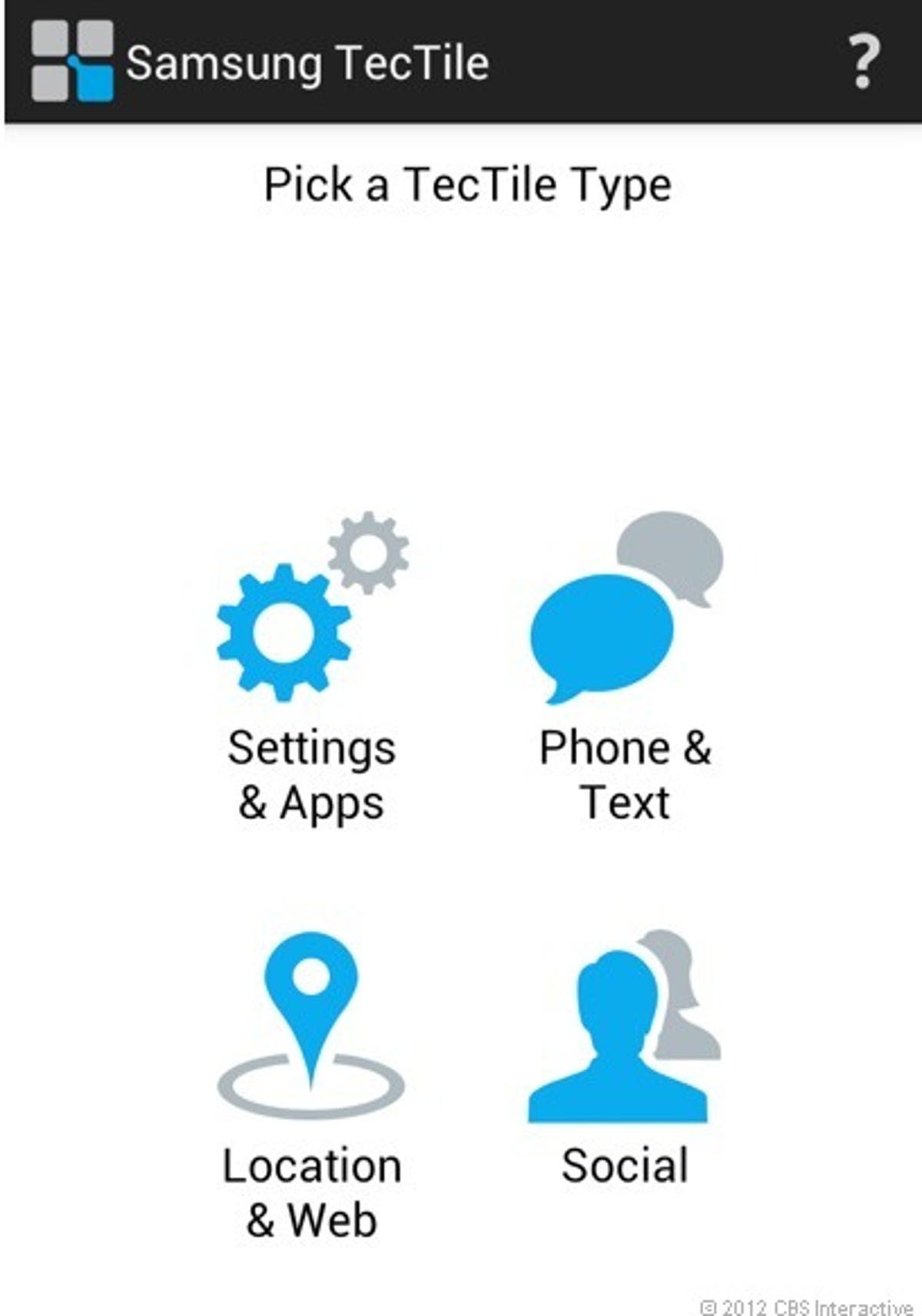
Screenshot by Jessica Dolcourt/CNET
Samsung may present its new TecTiles near-field communications (NFC) stickers-and-app combo as a campaign for consumers to do more with their phones, but in the long run, Samsung hopes for much more.
The electronics-maker told CNET that TecTiles should ultimately help serve Samsung its slice of the mobile payments pie. Its TecTiles app lets you program an NFC sticker to do various things when you tap a compatible phone to it, like turn on or off certain phone settings, or check in to a location on your social networks.
Yet, NFC, a technology that uses short-range communication similar to Bluetooth, has yet to go mainstream in any capacity.
Related stories
- Samsung TecTiles do cool stuff with phones
- How to use NFC tags with your Android phone
- Is NFC killing Google Wallet?
Part of the problem, according to Samsung, is that ordinary people are unused to physically using their phone to do things. Consumers know how to swipe cards and punch numbers, not to press a phone onto a terminal and authorize payment through an app.
Once upon a time Google Wallet stood as the best chance for NFC to take off, with Samsung providing the first phone to receive the app capabilities. Yet, Google Wallet’s development stalled thanks to a Verizon push-back that kept the app off of the Samsung Galaxy Nexus, and by narrow requirements for using the app with a single bank and credit-card combination.
In addition, not many businesses accept Google Wallet, as CNET editors Brian Bennett and Roger Cheng discovered when they took Google Wallet on a test drive through Manhattan. They almost didn’t make it out of a cab when the app stuttered.
Just this week, another report suggested that Sprint is working on a Google Wallet alternative.
Samsung’s NFC TecTile app, a closer look (pictures)






It’s no wonder, then, that Samsung thinks that NFC needs some positive press, and is furthermore tasking itself with making NFC lovable in ways that aren’t related to payments. Once people feel comfortable with TecTiles, Samsung reasons, then using the technology to buy stuff is a logical next step, rather than a scary leap.
To that end, TecTiles can be seen as a social experiment, a warmup act before the main usage takes the stage.
Samsung’s thinking seems to line up with others in the payment space, like American Express, which estimates a 4- to 6-year tipping point before mobile payments take off with gusto.
When NFC buying does succeed, Samsung wants to make sure that it’s one of the movement’s key players. And if that fails, well, at least Samsung will be able to make a few bucks or win a few hearts in the process.



